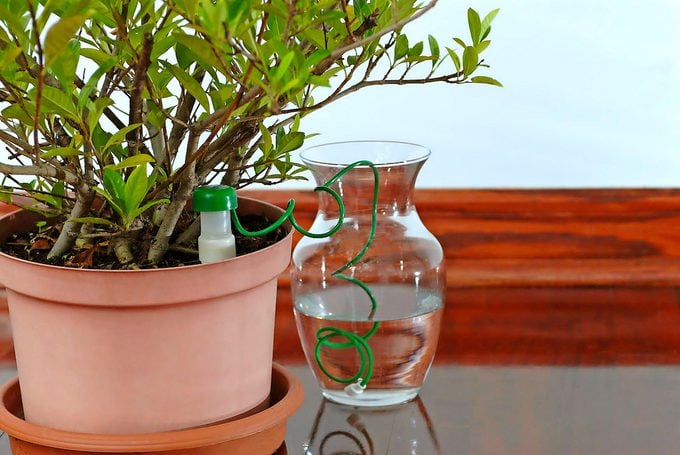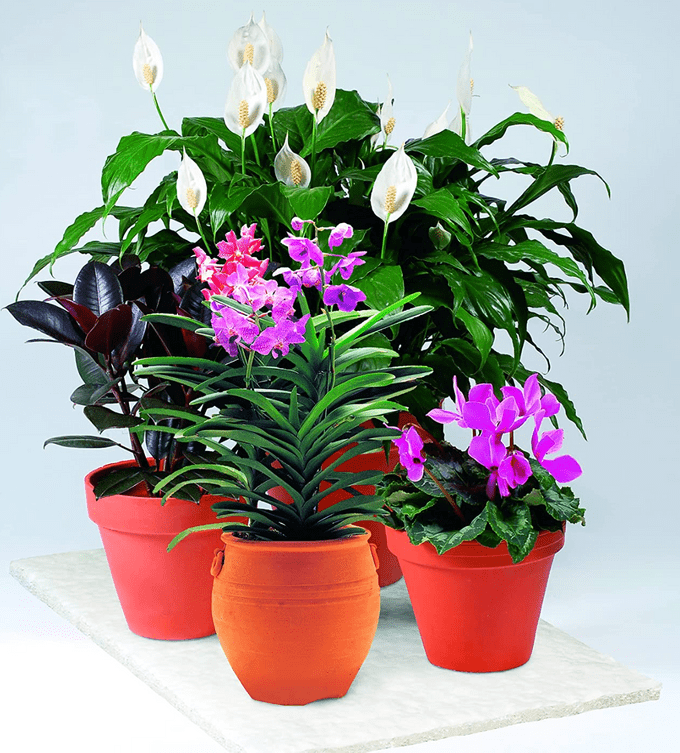Easy Watering: 6 Plant Waterer Products We Love
Updated: Feb. 15, 2024
Water your plants with ease! Keep your indoor and outdoor plants healthy with six plant waterer systems that do the work for you.
Our editors and experts handpick every product we feature. We may earn a commission from your purchases.
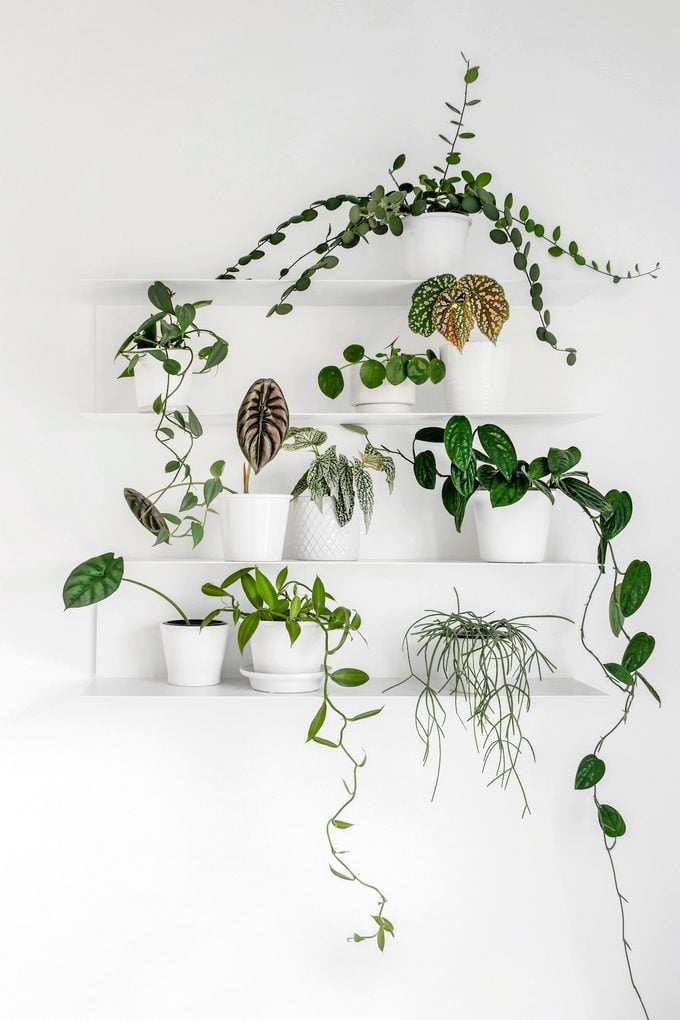
Gardeners know that watering plants, indoors or out, can turn into a daily chore. Thankfully, plant waterer systems are here to save the day and to keep you and your plants happier by providing consistent moisture, without overwatering. To pick the right solution, all you need to know is how much water your plants need.
Birds & Blooms reader Hannah Smith of Portland, Oregon, wrote in about this problem. “Do you have any hacks to keep houseplants perfectly watered?” she asks.
Garden expert Melinda Myers says, “Gardeners can extend the time between watering with a few gadgets. Plant nannies, glass watering bulbs and similar items hold and distribute water over time. You can also amend the soil with organic products such as wool pellets. The pellets hold more water than soil and reduce the need for water by up to 25%. Just incorporate this product into the potting mix when planting or repotting. Another option is self-watering pots. Keep the reservoir filled, and water is released into the houseplant’s soil as needed. You’ll be watering much less often with these containers.
Try these handy gadgets—they’ll keep watering to a minimum while keeping your plants looking their best.
Check out 10 ways to conserve water in the garden.
Plant Waterer Spikes and Globes
These simple devices let water slowly drip into the soil. Watering spikes require a glass or plastic bottle to act as a reservoir. Watering globes are an all-in-one solution, and many have a pretty blown-glass look. Depending on the size of your container, you may need several spikes or globes to keep your plant evenly watered. These are best for plants that like to stay continually moist. Try the Hydrospike line of plant waterers. Similar to watering spikes, these have a flexible tube that pulls from a larger container for less frequent refills. Or make your own DIY watering spike out of an old wine bottle.
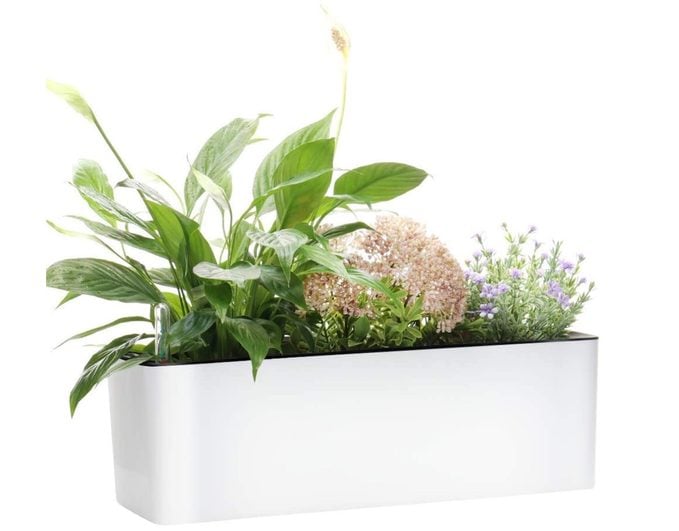
Self-Watering Containers
These handy pots feature a built-in reservoir in the base of the planter that allows water to be pulled into the soil as it dries. One downside is that they typically need refilling every few days. Most models recommended for indoor plants are made of solid-colored plastic, but those designed for outdoor use may give you more options. Try this elongated self-watering pot for herbs.
These are the best watering cans for every garden.
Humidity Mats and Water Trays
Water-soaked mats placed in trays below the plants or on top of the soil keep moisture levels steady. Tray mats work best with terra-cotta pots but may dry out quickly in direct sunlight. Rings that rest on the soil are visible and might be unsightly, so add some mulch to disguise them. Also try this humidity tray for your indoor plants such as orchids.
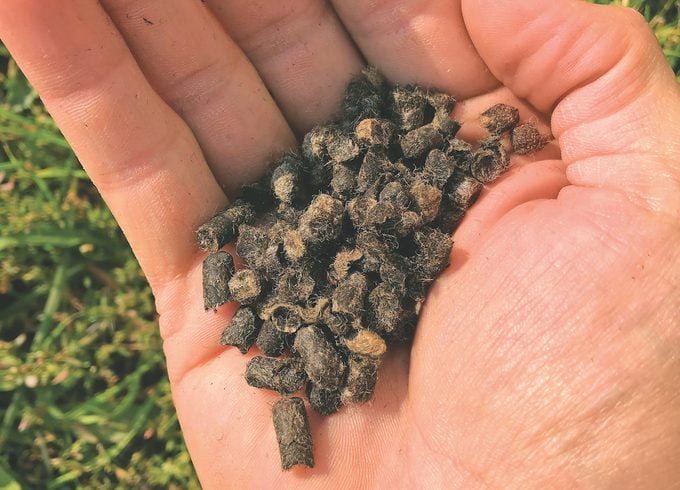
Wool Pellet Soil Additives
Pellets added to the potting mix absorb and then slowly release water back into the soil to reduce the need to water. Some are made from water-storing polymers, or you can try ones made of biodegradable wool. Do not use these in combination with systems that wick water into the soil; the water retaining ability of these additives will pull more moisture than your plants probably need. Try the wool pellets from Wild Valley Farms. They reduce watering needs by 25% and also deliver a gentle feeding from natural nutrients in the wool.
Get more tips for watering container gardens.
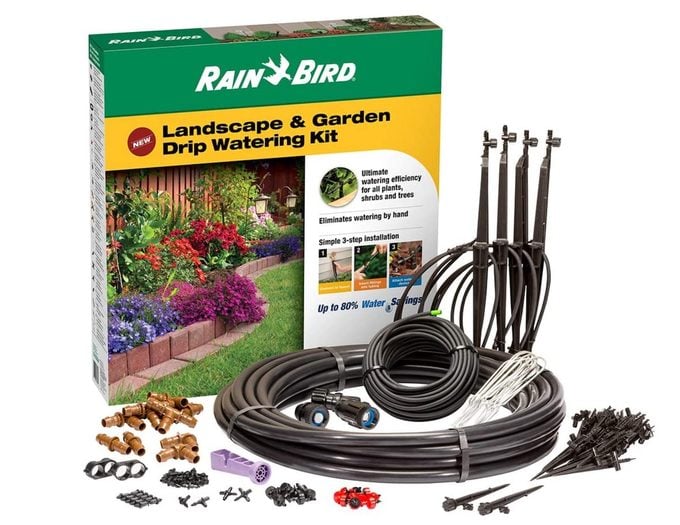
Drip Irrigation Systems
As a more complex setup, a drip irrigation system supplies a slow flow of water via an emitter attached to tubes. Plants must be close enough to the device for the tubes to reach. On some models, built-in timers can be adjusted for plants that enjoy a dry spell. Try the Rain Bird Landscape & Garden Drip Watering Kit.
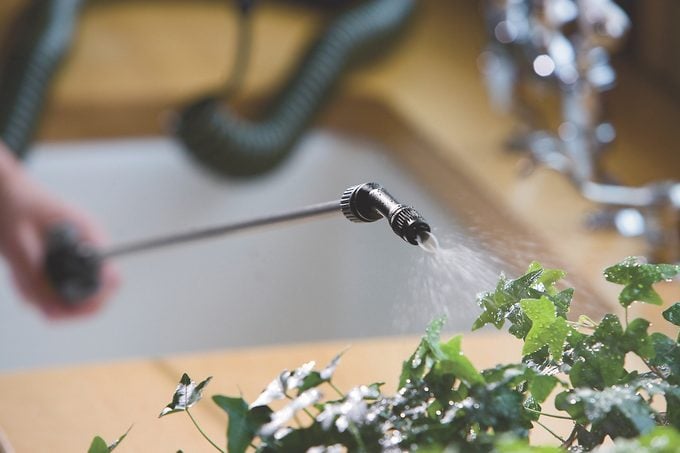
Indoor Hoses
For a plant waterer that you can easily store out of sight when not in use, try a hose that attaches right to your sink faucet like this one from Gardener’s Supply Company. The 24-inch wand makes watering indoor plants or seedlings a breeze.




















